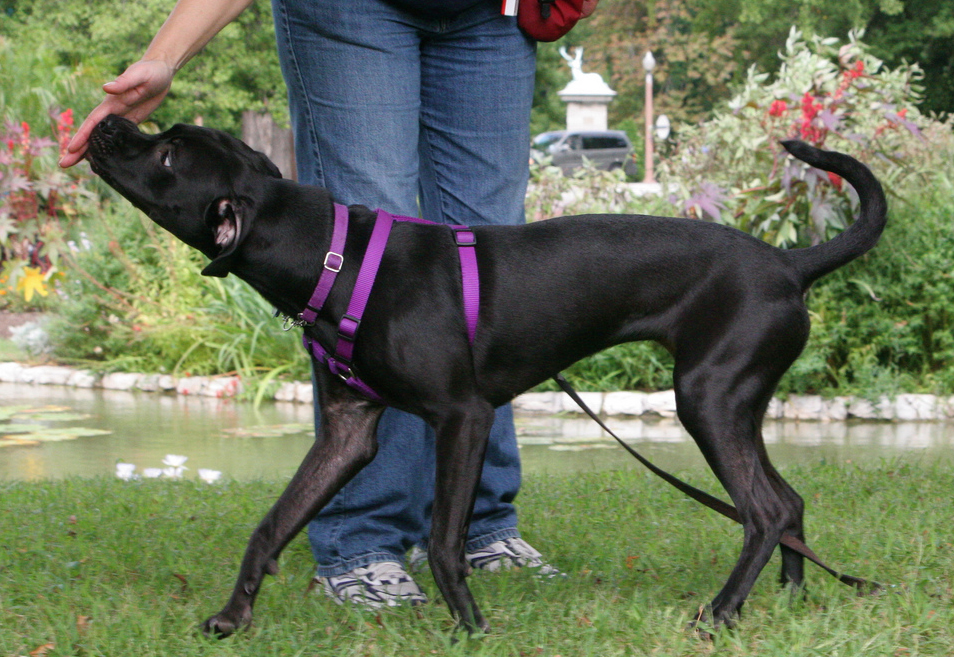Written by
Australian Dog Lover
12:09:00
-
0
Comments
When I encountered the idea of choice in dog training for the first time, I was fascinated. I still am, but there is much more to it than meets the eye. And while it does sound great, limiting choice is an important tool in positive reinforcement training. By managing the environment and therefore limiting choices we set our dogs up for success.
Positive reinforcement training has become the choice of a lot of qualified and accredited dog trainers and the laws of learning still apply but we have started questioning if the dog really has to do as told, always...
WHY SHOULD WE BOTHER WITH CHOICES?
A fundamental condition for wellbeing is the control the outcome of our actions.
Choice is empowering! There is not much research for dogs but it makes sense to assume that it is similar for them as it is for us. Anecdotal evidence suggests that dogs prefer having choices...
One reason why I am interested in this topic is that we see more and more dogs who are either stressed, anxious or display other behavioural problems. Some trainers will attribute this to the prevalence of positive reinforcement training, claiming that dogs have not enough boundaries and therefore develop behavioural problems. While I do not know of any scientific data on this, I do think there are different reasons for this phenomenon: positive training methods not being one of them.
Our dogs have become so regulated and limited in what they are allowed to do that they have lost all ability to make choices and control the outcome of their actions. Until fairly recently, dogs would roam the streets unsupervised and freely. Obviously there were risks associated with this and I do not advocate letting dogs roam the streets, but I will say their world has become very limited and increasingly smaller.
A lot of dogs spend a lot of time in backyards and on leashes. The only place they can go off leash is the off leash area which presents a complete new set of problems and as I've explained in this previous blog post, I'm not a huge fan!
Another reason for my interest are the advances in research into cognition and the results presented by cognitive scientists. One of the many recent groundbreaking studies is by Gregory Berns, the author of How Dogs Love Us which shows in this book that the cognitive abilities of dogs are much wider than anticipated.
Jennifer Arnold in her book Love Is All You Need goes even a step further and promotes a bond-based approach. Whilst I do support and see the merits of this approach the science is, in my opinion, not quite there yet. On the other hand it was long assumed that dogs could not imitate but most will agree nowadays that this is a valid form of learning.
For many owners training has become a co-operative process based on mutual trust and respect. Eileen Anderson from Eileen and Dogs makes an interesting point here:
"Amid all the talk about choice in training, we tend to forget that any cue in a positive reinforcement scenario offers a choice, whether we want it to or not!"Choice is also claimed by trainers using aversives such as shock collars; saying that the dog has a choice by complying with the ‘command’ and therefore avoiding the shock.
That is true but a classic example of forced choice.
It is fairly common now to let the dog decide if they want to participate in a training session or walk off. But leaving a training session when there is not much else happening, is that really choice?
Don’t get me wrong, this is a basic prerequisite for decent training. It also provides us with feedback. If the dog prefers to walk off instead of training with us then there might be a bit of a problem...
It is a similar situation with most of the early so called ‘choice games’ for dogs. There are not real choices at all. An example of this is the It’s Yer Choice training game. There is only one choice. The dog only gets the treat if the response is ‘correct’.
Don’t get me wrong, this is a basic prerequisite for decent training. It also provides us with feedback. If the dog prefers to walk off instead of training with us then there might be a bit of a problem...
It is a similar situation with most of the early so called ‘choice games’ for dogs. There are not real choices at all. An example of this is the It’s Yer Choice training game. There is only one choice. The dog only gets the treat if the response is ‘correct’.
This is shaping and that is fine but we should not call it ‘choice’. Or to be more specific it should be called a forced choice. A forced choice means there is only one option for a reinforcer as the alternative option leads to nothing.
On the other hand, free choice means that there are several rewarding options available. Some choices are better than others, this is just life. But it seems that having a free choice is reinforcing in itself. I personally can relate to that!
 Having choices is motivating as long as it is a real or free choice and there are more than one way for a positive outcome.
Having choices is motivating as long as it is a real or free choice and there are more than one way for a positive outcome.In our daily life this might mean giving your dog more options for resting places, occasionally let them make a choice which way to go on a walk or ask what they would like for dinner. It can also mean letting them create new games.
Zorbas, my old dog, has started to push the ball with his nose towards me or lets it roll downhill. At his age of almost 14 years it gets more difficult for him to run after the ball but he still likes playing with it. Why not let him choose his own games?
WHAT ABOUT TEACHING DOGS TO SAY YES OR NO?
Another option is that we learn their language and start observing their body language more closely. Dogs say yes and no very often and clearly. Once I wrote an on dogs’ right to say no. But let's assume we want to teach them our way...
Touching the RIGHT hand means YES, touching the LEFT hand means NO.
Start with showing them a treat and put the treat where they can see it. Present your right hand only, if they touch say yes, give them a treat. Repeat.
Then start working with ‘life rewards’ like going out the door. Stand in front of the door, ask: “Do you want to go out?” Present the right hand, reward by letting them go out. Then present both hands, let them go out if they touch the right hand.
Teaching no is a bit more difficult. Choose a situation you know the dog does not really want to do it but is not aversive.
1. An example is putting on a harness for a dog who is not too keen on it.
Show the dog the harness, present your left hand for no. If the dog touches, put the harness down. In this case, it is rewarding for the dog that you do not put the harness on.
2. Another situation is taking them out at night when it is raining to go to the toilet. Only do that if the dog is completely house trained. Ask "do you want to go to the toilet?" - or whatever your cue is for going to the toilet.
Present the left hand only. Once that is reliable, introduce the right hand, too. I have started teaching my dog Shellbe this. I really had not much trouble teaching her that touching my right hand meant YES however teaching her that the left meant NO proved a bit more challenging!
While I still occasional ask yes or no, I am watching her body language much more carefully now. An enthusiastic hand touch clearly indicates she wants to interact with me, play or train. If she turns away, starts sniffing the ground or even yawns or licks her lips, that is pretty clear that she says no.
Barbara Hodel has been involved in dog training for the last 16 years. She has completed a Certificate IV in Companion Animal Services and a Diploma in CBST (Canine Behaviour Science and Technology). She’s also a Delta-accredited instructor since 2007.
She's also the President of the Pet Professional Guild Australia (PPGA).
She has been running Goodog Positive Dog Training on the Northern Beaches Sydney for the last nine years, running classes on all levels as well as workshops and agility fun classes.
www.goodog.com.au
She's also the President of the Pet Professional Guild Australia (PPGA).
She has been running Goodog Positive Dog Training on the Northern Beaches Sydney for the last nine years, running classes on all levels as well as workshops and agility fun classes.
www.goodog.com.au












No comments
Post a Comment